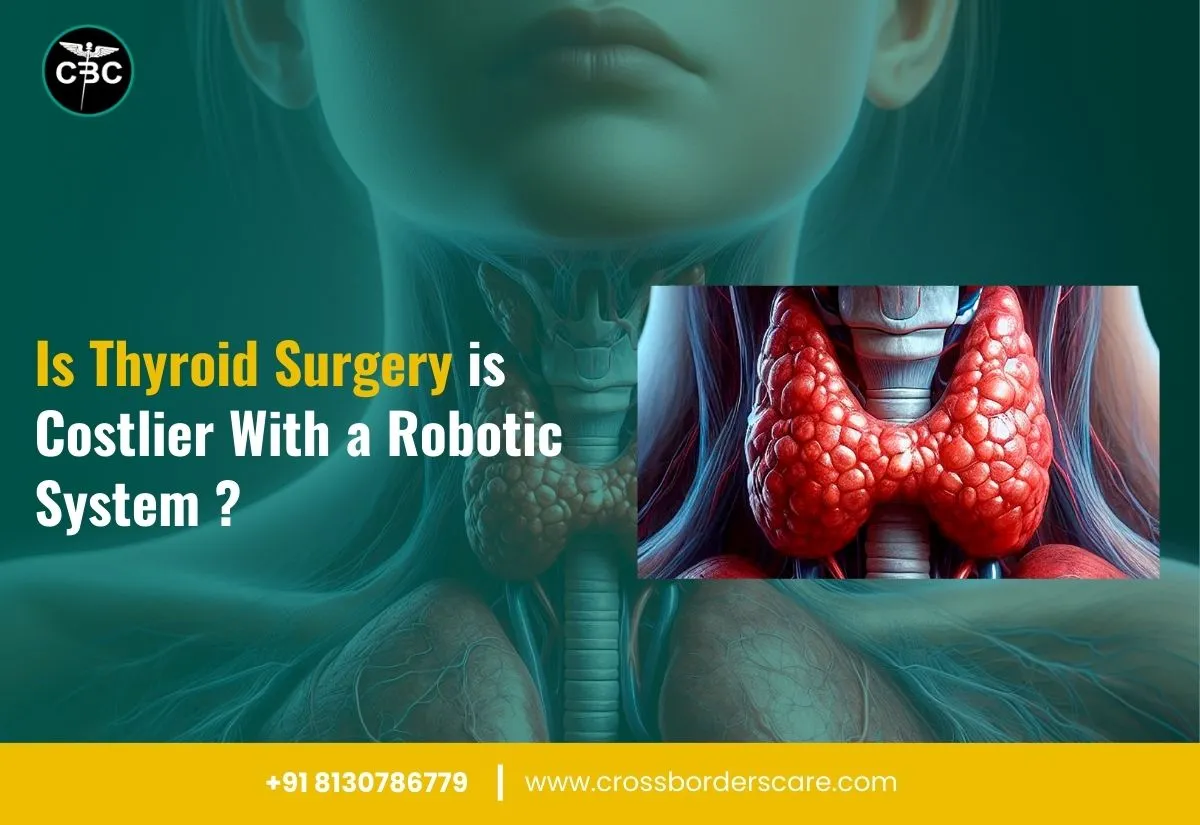Patients looking for treatment for thyroid issues may seek the potential help of robotic thyroid surgery. Several factors contribute to the high cost of thyroid surgery with robotic systems.
Read on to know more about this raise in costs, the key cost factors, and cost vs. benefit analysis on robotic thyroid surgery in this write-up.
Thyroid surgery with robotic system- An outline
While traditional thyroid surgery is performed using open surgery or endoscopic methods, these come with noticeable scarring and long recovery times. The use of advanced surgical robots like the Da Vinci Surgical System in robotic thyroid surgery eliminates the issues of enhanced recovery time, increased postoperative pain, and increased chances of infections with traditional surgery.
Robotic thyroid surgery follows a minimally invasive approach through small incisions either from transoral routes or transaxillary routes. Hence, the overall recovery time and scarring is reduced in robotic thyroid surgery.
Why is thyroid surgery with robotic systems costlier?
Initial investment costs
Firstly, the investment in robotic surgical systems is high. This is due to the high purchase and maintenance costs of the robotic system used in thyroid surgery. The initial investment in systems like the Da Vinci ranges from 1.5 to 2.5 million USD.
It is further based on the type of model and configuration. The high initial investment cost of robotic systems covers high-definition 3D visualisation, robotic arms with multiple degrees of freedom, and specialised instrumentation.
Maintenance and operational costs
The robotic systems require dedicated maintenance and operations for smooth efficacy. Regular maintenance, technical support, and software updates add to the overall costs of the robotic surgery.
Per-procedure costs
Thyroid surgery using robotic systems has considerable procedure requirements like disposable consumable supplies and specialised instruments. These costs are higher than the costs of the traditional thyroid surgery.
Training and skill development of surgeons
The use of the robotic system for thyroid surgery requires extensive training of surgeons and operating staff. This leads to higher costs per procedure without reducing the efficacy of the surgeons.
Operating room time
The robotic surgery takes longer time than the traditional methods during the learning phase. This longer operating time increases the overall costs linked to the operating rooms. It covers facility overhead, anaesthesia team, and staff time.
Scarcity of Robotic System in India
The availability of the robotic system in India for thyroid surgery is limited to the metropolitan and big cities only. Hence, patients need to to travel to these regions which adds to the overall treatment costs.
Limited trained surgeons
The training of the surgeons for the robotic thyroid surgery is available in medical excellence regions like the USA. Hence, the overall limited trained surgeons adds to the costs of this robotic treatment.
The average cost of thyroid surgery with the robotic system in India.
Thyroid surgery with robotic systems in India costs around 5,000 USD to 8,000 USD on average. It further depends on the different factors like the patient’s condition, type of hospital, and expertise of the medical professionals.
Cost vs. benefit analysis- Robotic thyroid surgery
When it comes to the cost vs. benefit analysis of the thyroid surgery with robotic systems, there is a fair play for the majority of patients. The availability of the top-class robotic systems, properly maintained robotic arms, and expert processes justifies the robotic system costs.
The expertise of the robotic surgeons and dedicated facilities for the robotic thyroid surgery ensures that patients are less prone to the complications and can enjoy enhanced recovery rates.
Not to miss is that Cross Border Care can help patients to unlock the benefits of robotic thyroidectomy while making it as affordable as possible for a broad range of patients.




